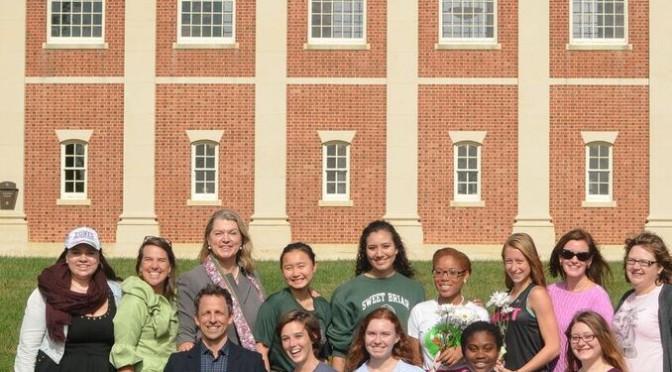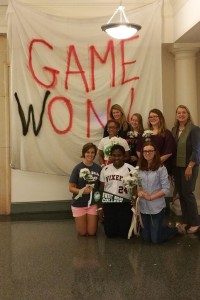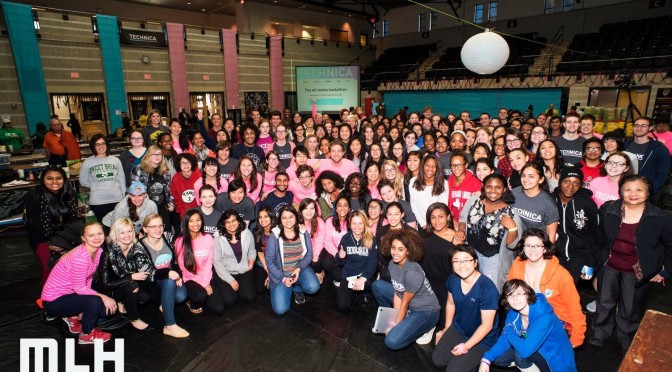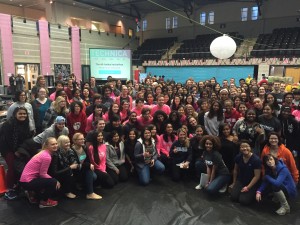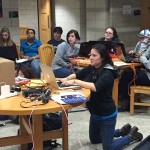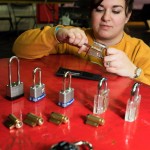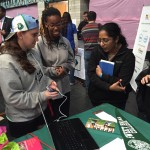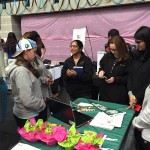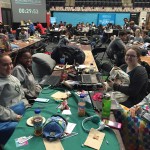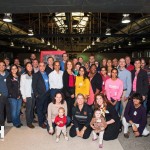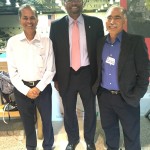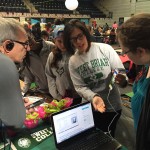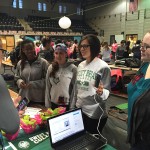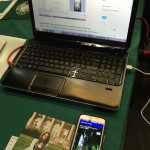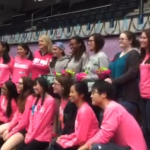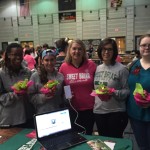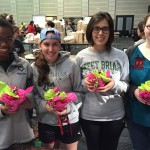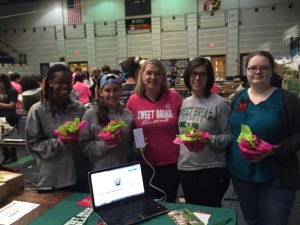Don’t be (color)blind! Instead, SEE diversity. And other lessons I learned after inadvertently insulting people.
A few weeks ago while watching the Republican National Convention, I listened to Ivanka Trump give her speech introducing her father. I’ll spare you my opinion of her father as I don’t intend for this to be a political message. I’ve admired Ivanka Trump over the years as someone who seemed to be able to both work and raise her children. I found myself nodding along until she started to go down hill.
No. She. Didn’t. She didn’t just use the term “colorblind” in a positive way.
Yes. She. Did. How sad.
For many reasons which I will explain further if you care to read, I am sensitive to language that can be offensive to others. The term “colorblind” is an offensive term. For many years I used the term “colorblind” as a badge of honor to explain that I was a person who valued race and diversity. Little did I know how troubling that term was and how many lessons I had to learn. This, my dear friends, is a story about just some (of the most painful) lessons I’ve learned. Hopefully, you’ll be nodding along with agreement. If not, perhaps I might spare you the embarrassment I had to face.
So, I posted a note on Facebook about my disappointment at Ivanka Trump’s statement and the (to me) obvious lack of formal diversity training this kind of statement said to me. Then,at some point, I retired to bed with memories of my own journey learning about diversity, tolerance, racism, and more over the course of my career. .
I woke up to a sh*tstorm. Many people I knew agreed with me and added their thoughts to the concept. Several of my well-respected friends took offense to my comments and asserted their own “colorblindness” and simultaneous commitment to diversity, etc. Some of my friends argued with the others (though they don’t know each other). I felt badly for those who were getting a firehose of new information which they considered to be insulting their intelligence (these are very smart people, mind you). Everyone probably has now and again a post that takes on a life of its own. That one became one of those posts.
A few brave souls sought me out over the next few days by phone, email, and one in person to ask me to explain the concept further and admitted that they hadn’t realized that their use of the term could be offensive to others. I thought I would share the thoughts here to spare others possible embarrassment or unintended offense. It is surprising to me in today’s world how people do not come across diversity training either in their reading, workplaces, schooling, places of worship, or elsewhere. I shouldn’t assume that people would access information like this I now realize (another hard lesson), but it doesn’t mean that I should stand aside and not correct it.
I learned the hard way. Let me help you fast-forward your learning.
It was in the early 1990s when I first had formal diversity training. I have always considered myself a progressive person, open minded, and definitely not racist in anyway; however, what I was ignorant to were my own biases and privileges that I didn’t even see as a result of being born a white female. I’ll never forget the day when a family sat down in my office at Grace Episcopal Day School.
“How is it in this school that you can buy access to a teacher?” I replied, somewhat dismayed, “Of course you can’t buy access to a teacher.” “Yes you can”, the family replied, “Right here in our school at the school auction rich families can buy a bike trip or an afternoon with their favorite teacher.” I began to wince. This was, sure enough, one of the most popular silent auction items. Every year it got some of the biggest donations — and I had been not only proud of the dollars raised, but advocated in the teacher’s lounge for teachers to volunteer. It so happens that this family (a family of color) had banded together with Aunts and Uncles and a Grandmother to pull together funds to buy the bike trip with a favorite teacher for their daughter for her final year of school. They even took out a short-term loan to get it. They attended the silent auction and bid. They bid some more. When the bidding went over $1,000 for a half-day with the teacher, they backed out. Their daughter was devastated. So was I.
The important thing is that this family would never even come into my office if it weren’t for the fact that we had done some formal diversity training in our school over the course of the past year. As a result of an amazing woman who passed away, Sherryl Talton Gerald, parents in the school banded together to raise funds in her memory. Sherryl was known for bringing all of the different months alive, especially black history month. She created amazing activities during that month enriching the curriculum for all students. When she tragically died suddenly, the parents wanted to keep her work alive. I never had the honor of knowing Sherryl, but I am forever touched by her.
A few months after being on the job as Director of Development for Grace Episcopal Day School, a friendly woman came to my office to say, “What are we doing with the Sherryl Talton Gerald funds?” At the time, I wasn’t sure what fund they were talking about. “It’s December”, my parent said, “We need to plan something with the funds for this coming February”. Thus the work began. In a small school where there aren’t too many people to do extra things, the job fell to me and a band of parents. We launched a lecture featuring Dr. Freeman Hrabowski, President of the University of Maryland Baltimore County (UMBC). It was wildly successful. I became the defacto Diversity Coordinator while serving as Development Director.
It was also confronting. Some of the families who came to the lectures asked difficult questions of the speaker during the question and answer period — questions that hinted at subtle and overt racism in our school and problems they faced. These were systemic problems. Problems every school, workplace, and institution faces. I heard things like:
“My child doesn’t get invited to birthday parties.”
“We were invited to a birthday party at a private club and turned away by the valet driver.”
“My child’s teacher uses the term “colorblind” like it is a badge of honor… doesn’t she realize my child would rather be SEEN and appreciated?”
It was clear we had work to do. The head of school, Carol Franek, and I worked with families to choose a consultant to do some formal training with faculty, staff, and eventually the community. We hired Randolph Carter of East Ed. It was a very interesting process.
In classic form, many people in the majority (over)reacted to the notion of offering diversity training. Some parents made wildly inappropriate statements (not unlike some things heard on the campaign rail this year). Most felt they didn’t need it. Many said things like, “I raise my child to be color blind. She doesn’t need to learn about diversity, we practice it all the time.” These were the same people who questioned why we needed a “Parents of Children of Color” group. Questioning ethnic or racial groups choosing to sit together or share common experiences is often seen as threatening in some ways and critiqued. Beverly Tatum in her best-selling book, “Why are all the black kids sitting together in the cafeteria” is suggested reading on this concept. Here, I’ll save you time and give you the cliff notes: White people affiliate all the time. Tatum writes, “Is this self-segregation a problem we should try to fix, or a coping strategy we should support?” Answer: No and yes.
What I learned about families of color wanting to share common experiences is that many needed to share ideas about how to manage the racial discrimination already impacting their children at the youngest ages. Far be it for me to question this need. I learned the concept of “Affinity groups” and I learned to appreciate their importance. I started to become an ally.
Side note – we don’t question religious groups meeting together on Sundays or at other times. Why would we question groups who wish to share a similar experience at another time?
When the faculty went through their diversity training, a similar range of emotions and reactions unfolded. Some reactions surprised me, particularly from those who considered themselves to be very unbiased and open minded. As they heard from their colleagues and parents from diverse backgrounds, they had the privilege of seeing how their unintended biases and statements hurt people. They learned that terms like “color blind” offend people of color. They learned that appreciating diversity of all kinds enriches relationships, a school, a workplace, and a community. Trying to see past it, not talk about it, or question other people’s adaptive behavior is part of being in the majority. Some call this “white privilege”.
Side note – yes this is a loaded term. Yes this makes people feel uncomfortable. No, I will not try to find another term. If you find it uncomfortable, that’s the point. White priviledge is real and it is something every white person (in my opinion) should learn about as a citizen of our planet. If you don’t like it, get over it.
White privilege is not a term that was born in this election cycle. I was introduced to it in 1988 while attending Sweet Briar College by our Chaplain, The Rev. Susan Lehman. She shared Peggy McIntosh’s research which later became an iconic article, “Unpacking the invisible knapsack”. http://nationalseedproject.org/white-privilege-unpacking-the-invisible-knapsack
This concept of whiteness was a revelation to me — being responsible for it; recognizing the benefits I have by being born white; recognizing my role as an ally to those who face discrimination on the basis of the color of their skin. I got a great education at Sweet Briar College, but it was this concept introduced to me by our Episcopal Chaplain that is one of the best life lessons I took away. This was 1988 folks. I am simply astonished that in 2016 there are people who haven’t heard this term nor haven’t participated in formal diversity training.
Side note – if you haven’t done any formal diversity training, get some. Need some suggested reading? The links in this article. Should it make you feel uncomfortable? Probably. The truth is, we all have biases. Learning about those biases will make us better people in all situations. If you don’t like it, get over it. Life isn’t about being comfortable. Life also isn’t about unseeing.
So, back to the parent sitting in my office. Even after two years of diversity work, we still had our blinders on. While we had made some very good changes in terms of respecting racial, ethnic, religious and other types of diversity, we had major blinders on when it came to socioeconomic diversity. As the parent sat with tears sliding down her face, I felt horrified and embarassed. Of COURSE it was wrong to auction off a teacher to the highest bidder in a small community. I hadn’t seen it. My desire to raise funds and the wild success of rapidly-increasing special teacher outings blinded me to how it would feel to those who couldn’t afford them.
Then I spoke to the teachers.
It turns out, the teachers HATED these special outings. They were embarrassed to single out one or two children for a special outing and felt terrible when those children returned to class raving about it in front of the other children. They admitted they felt conflicted when it came to grading and disciplinary actions knowing a parent had paid so much for a simple afternoon for their child. With this, I visited the Parent Teacher Organization and the practice was immediately stopped. We still did teacher outings, but the teachers did something with their whole class and parents could contribute any amount for the special activity. Some of our best field trips resulted from this change.
Fast forward to this election cycle, it is stunning to hear elected officials, their family, and their supporters saying things that in a school, workplace, religious institution (at least some), or household sound and are deeply offensive. In some places, these statements would be grounds for disciplinary action, termination, or legal action. A frightening number of hate groups rally behind a leader who speaks in these terms.
Somehow decades of work, suffering, and laws to achieve social justice is now being lumped into a category of “political correctness” — as if it should be undone.
The person speaking this way is glorified for “speaking their mind”.
For me, the lessons learned about treating people fairly and with tolerance is an ongoing journey. I know I still have my biases and blinders and blindness. The difference is, I am not proud of it. And I certainly don’t speak of these things as a badge of honor. Imagine if I said, “I’m sexual orientation blind”, “I’m ethnic blind”, “I’m age blind”, etc. Sounds strange, right? Why, then, do we think it is okay to say, “I’m color blind.”
As Chair of the Equity, Diversity, and Inclusion Committee for the University of Maryland Senate, I have worked with many people to create policies for nondiscrimination, against sexual harassment, and advocating for LGBTQ rights. I am constantly learning lessons by hearing stories of people who daily experience discrimination in their lives. It is gut wrenching.
As a white woman in today’s world, I see one of my most important roles beyond being a wife, mother, daughter, and friend is being an ALLY. I now use my privilege to advocate for those who may not have the same ability to navigate the world as I do. I stick up for the underdog. I stand up against the bully. And, I call out racism — subtle or unintended — when I see it. I do the same for sexism and other isms. I especially try to do this for those I care about to help them avoid insulting others unawares.
These are my crib notes. These are the things I wish I’d learned earlier in life and I share with you now.
Don’t be colorblind. See color. See race. See ethnicity. See religion. See sexual expression. See diversity.
Then, appreciate it.
It isn’t political correctness. It isn’t politics. It is SEEING our fellow humans on this precious planet earth.
See.
Reference:
http://nationalseedproject.org/images/documents/Knapsack_plus_Notes-Peggy_McIntosh.pdf
 Follow us....
Follow us....



 by
by 
Share this....


 by
by  Thanks for sharing!
Thanks for sharing!




































